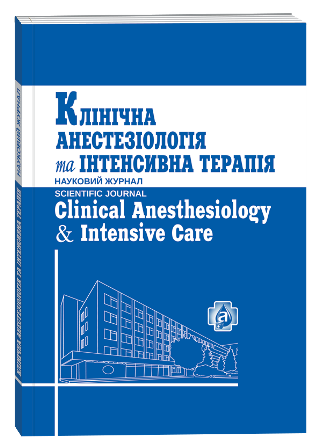MALIGNANT HYPERTHERMIA: HISTORY OR REALITY
Keywords:
Anesthesia; Malignant Hyperthermia; In vitro contracture test; dantroleneAbstract
Introduction. Malignant Hyperthermia (MH) is known as an anaesthetic risk since 1960. Morbidity has decreased remarkably with better understanding of the pathophysiology and availability of a specific treatment, but still patients are dying of a fulminant MH crisis. Case Presentation. We report a male patient undergoing general anaesthesia with propofol, isoflurane and atracurium for appendectomy developing Malignant Hyperthermia. The boy dies of multiple organ failure in unavailability of dantrolene. As the parents could not afford the far travel to a MH laboratory to undergo an IVCT (In vitro contracture test) we did a genetic analysis of their blood. The results of mutation screening showed no mutations in the father and a mutation in exon 40: 6635 T>C Val-2212-Alnine. This mutation is not accepted as causative by the European Malignant Hyperthermia Organisation . Conclusions. Crisis of MH is a rare event with a serious risk of lethal outcome for susceptible individuals. In order to keep mortality low, meticulous preoperative evaluation of patient medical history, adequate intraoperative monitoring, availability of a sufficient stock of dantrolene and thorough training of anesthetists and theatre staff need to be provided by any institution delivering general anaesthesia.
References
Denborough M. Anaesthetic deaths in a family / M. Denborough, R. Lovell // Lancet. – 1960. – N 2. – P. 45.
Emergency Treatment for An Acute MH Event [Electronic resource]. – Access mode : http://www.mhaus.org/healthcare-professionals/managing-a-crisis
Mutations in RYR1 [Electronic resource]. – Access mode : https://emhg.org/genetics/mutations-in-ryr1/
Sudden death due to malignant hyperthermia during general anesthesia / K. Wochna, A. P. Jurczyk, W. Krajewski, J. Berent // Arch Med Sadowej Kryminol. – 2013. – N 63 (1). – P. 11–4; 7–10.
Case report: Death in the emergency department: an unrecognized awake malignant hyperthermia- like reaction in a six-year-old / W. A. Lavezzi, J. F. Capacchione, S. M. Muldoon [et al.] // Anesth Analg. – 2013. – N 116 (2). – P. 420–423.
A fulminant Malignant Hyperthermia Episode in a Patient with ryanodine receptor Gene Mutation p. Tyr522Ser / T. Girard, M. Suhner, S. Levano [et al.] // Anesthesia&Analgesia. – 2008. – N 107 (6). – P. 1953–1955.
A survey for prevention and treatment of malignant hyperthermia in Taiwan / W. H. Yip, C. L. Mingi, S. J. Ooi [et al.] // Acta Anaesthesiol Taiwan. – 2004. – Vol. 42 (3). – P. 147–151.
Trends and outcome of Malignant Hyperthermia on the United States, 2000 to 2005 / E. B. Rosero, A. O. Adesanya, C. H. Timaman [et al.] // Anesthesiology. – 2009. – N 110. – P. 89–94.
Regional distribution of predisposition to maligant hyperthermia in Germany: date in 1997 / E. Hartung, M. Anetseder, D. Olthoff [et al.] // Anasthesiol Intensivmed Notfallmed Schmerzther. – 1998. – N 33 (4). – P. 238.
Malignant hyperthermia in Canada: characteristics of index anesthetics in 129 malignant hyperthermia susceptible probands / S. Riazi, M. G. Larach, C. Hu [et al.] // Anesth Analg. – 2014. – N 118 (2). – P. 381–387.
A protocol for the investigation of malignant hyperpyrexia (MH) susceptibility. The European Malignant Hyperpyrexia Group / British Journal of Anaesthesia. – 1984. – N 56 (11). – P. 1267–1269.
Prediction of malignant hyperthermia susceptibility in low-risk subjects. An epidemiologic investigation of caffeine halothane contracture responses. The North American Malignant Hyperthermia Registry / M. G. Larach, J. R. Landis, J. S. Bunn [et al.] // Anesthesiology. – 1992. – N 76 (1). – P. 16–27.
Criteria for gene mutations to be used in genetic testing of Malignant Hyperthermia susceptibility. – Available at : emhg.org/fileadmin/EMHG/redaktion/Guidelines/Mutationcriteria2003. pdf
A clinical grading scale to predict malignant hyperthermia susceptibility / M. G. Larach, A. R. Localio, G. C. Allen [et al.] // Anesthesiology. – 1994. – N 80 (4). – P. 771–779.
Muscle biopsy and in vitro contracture test in subjects with idiopathic HyperCKemia /A. Malandrini, A. Orrico, C. Gaudiano [et al.] // Anesthesiology. – 2008. – N 109 (4). – P. 625–628.
Malignant hyperthermia deaths related to inadequate temperature monitoring, 2007–2012: a report from the North American malignant hyperthermia registry of the malignant hyperthermia association of the United States / M. G. Larach, B. W. Brandom, G. C. Allen [et al.] // Anesth Analg. – 2014. – N 119 (6). – P. 1359–1366.
Identification of a dantrolene-binding sequence on the skeletal muscle ryanodine receptor / K. Paul-Pletzer, T. Yamamoto, M. B. Bhat [et al.] // J Biol Chem. – 2002. – N 277 (38). – P. 34918–34923.
Malignant hyperthermia: a review / H. Rosenberg, N. Pollock, A. Schiemann [et al.] //Orphanet J Rare Dis. – 2015. – N 10. – P. 93.
Malignant Hyperthermia Australia and New Zealand. – Available at : http://www.anaesthesia.mh.org.au/mh-resource-kit/w1/i1002692/.
Malignant Hyperthermia Association of the USA. – Available at : http://www.mhaus.org.
Recognizing and managing a malignant hyperthermia crisis: guidelines from the European Malignant Hyperthermia Group / K. P. E. Glahn, F. R. Ellis, P. J. Halsall [et al.] // Br J Anaesth. – 2010. – N 105 (4). – P. 417–420.







